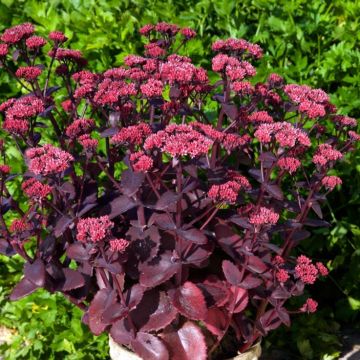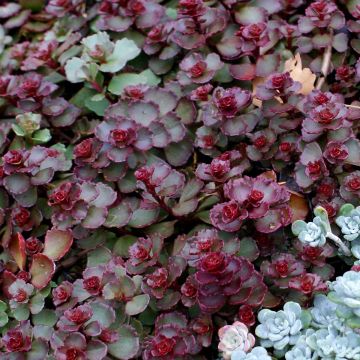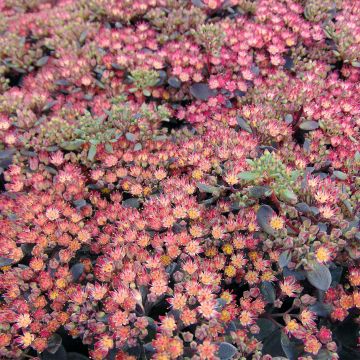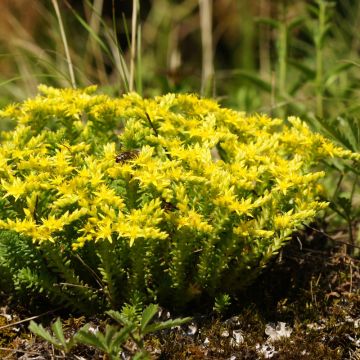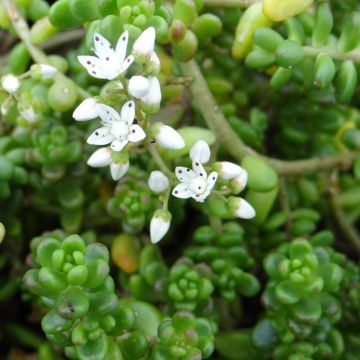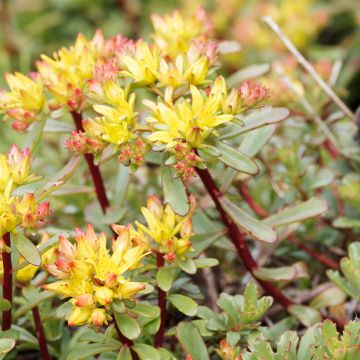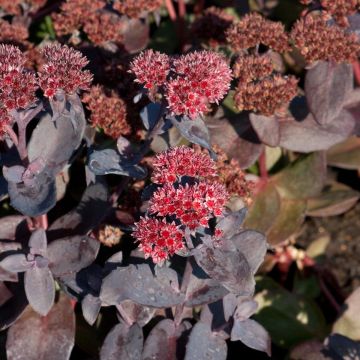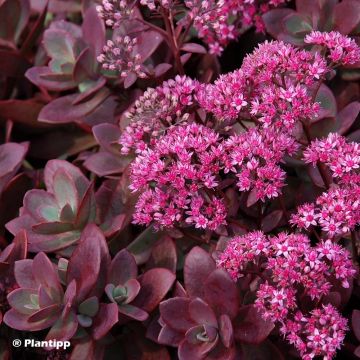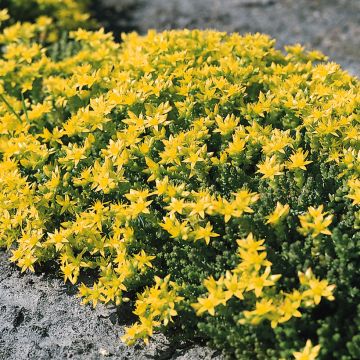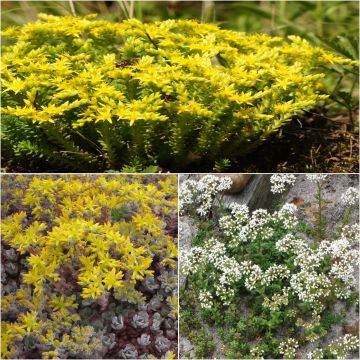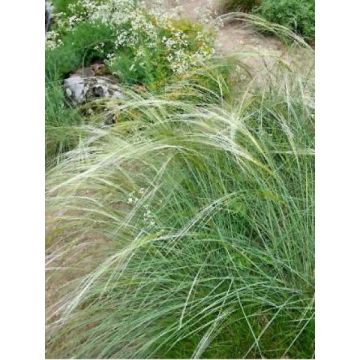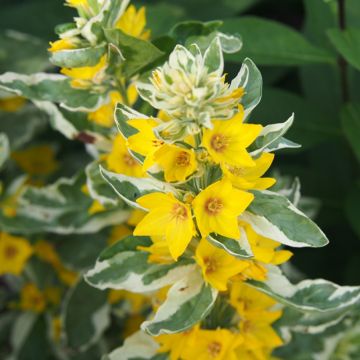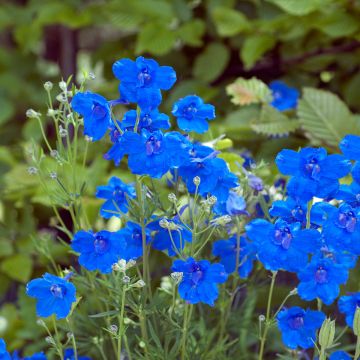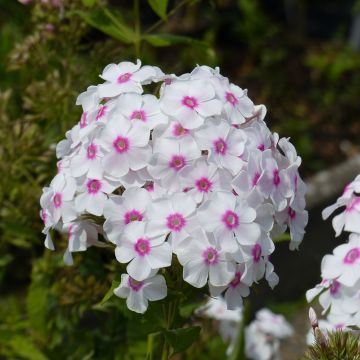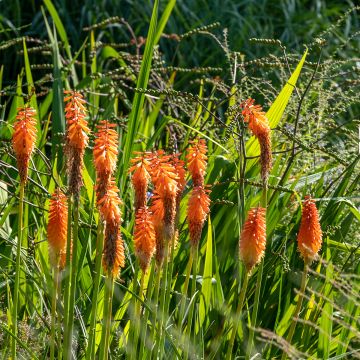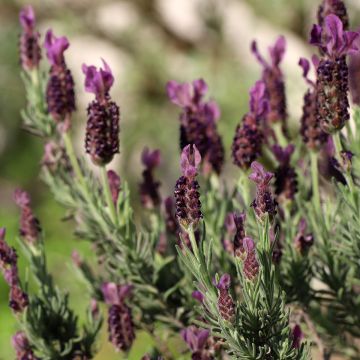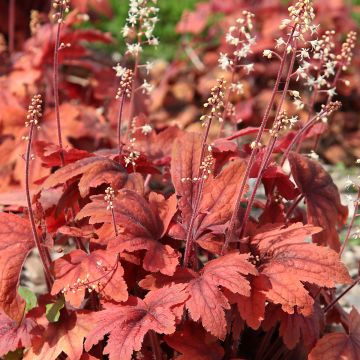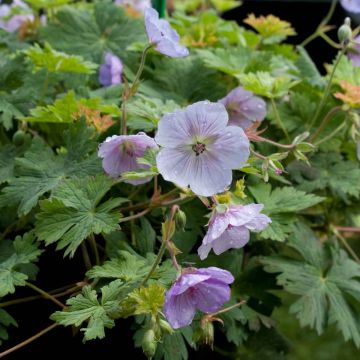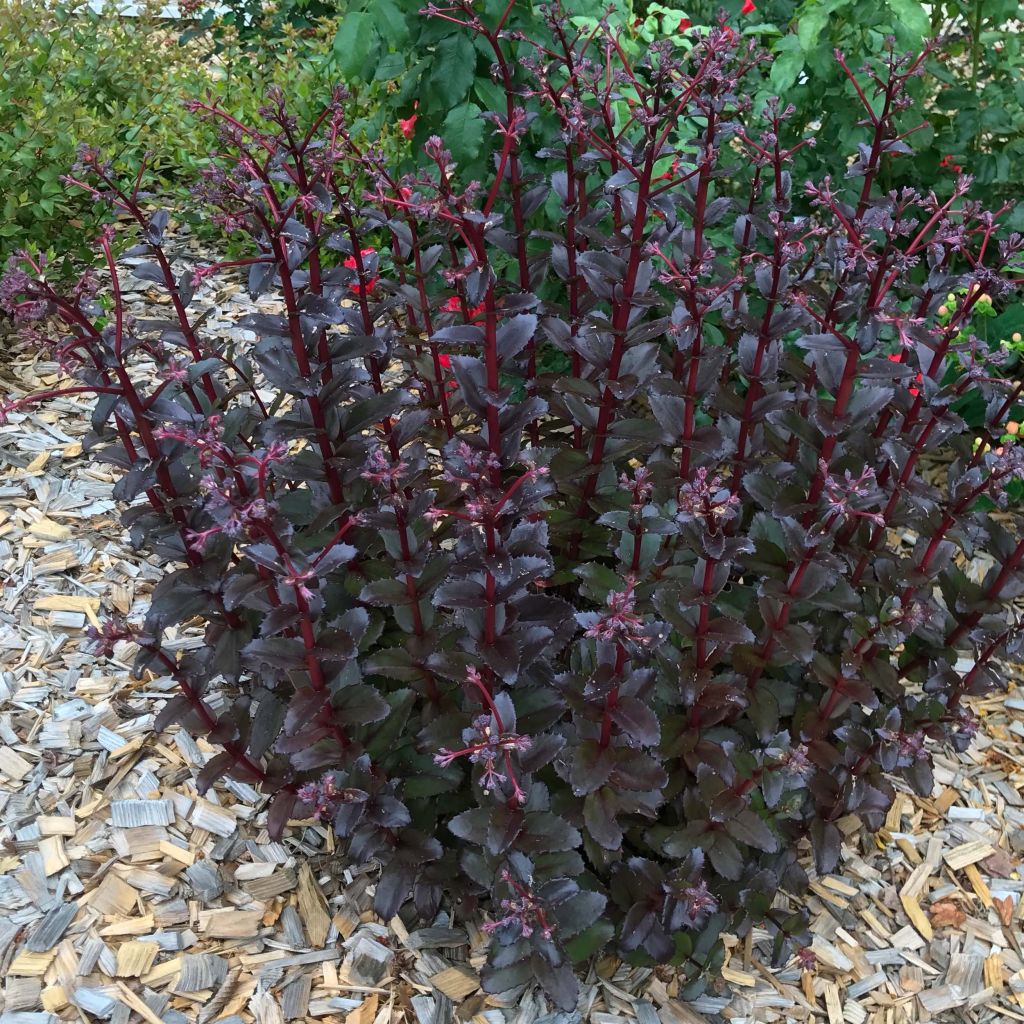

Sedum Black Knight - Autumn Stonecrop


Sedum Black Knight - Autumn Stonecrop
Sedum Black Knight - Autumn Stonecrop
Sedum Black Knight (‘Dolseb’)
Stonecrop
Very nice young plant purchased in a pot. The sedums are great for the "green-fingered gardeners". I have them in pots and also planted in the ground for many years.
Isabelle, 08/08/2022
Why not try an alternative variety in stock?
View all →This plant carries a 12 months recovery warranty
More information
We guarantee the quality of our plants for a full growing cycle, and will replace at our expense any plant that fails to recover under normal climatic and planting conditions.
From €5.90 for pickup delivery and €6.90 for home delivery
Express home delivery from €8.90.

Does this plant fit my garden?
Set up your Plantfit profile →
Description
Sedum 'Black Knight' is an interesting hybrid stonecrop with a natural resistance to powdery mildew. It is an incredibly decorative variety, with very dark, almost black foliage, which enhances its colourful pink-red flowering in September. It is a small, upright and bushy plant that has a great effect in well-drained borders and rockeries, in front of taller plants and bushes. This variety also performs well in pots. Give it a sunny location and well-drained soil, even dry and rocky. Hardiness: -15°C (5°F).
Sedum 'Black Knight' belongs to the Crassulaceae family, which includes many species of drought-tolerant succulent plants. The genus Sedum includes many allies for the garden, with varied shapes and colours. 'Black Knight' is a horticultural hybrid that was recently selected in France by Marie-France Doll.
The vegetation of Sedum 'Black Knight' emerges from the ground in spring, then dries up in autumn. It forms a small clump of leafy stems measuring about 50cm (20in) in all directions. The foliage is composed of small, thick, ovate, shiny leaves. They are dark purple, sometimes becoming black under certain lighting. The flowering takes place in September. At the end of the stems, flattened inflorescences form, composed of a multitude of dark purple flower buds that open into small pink-red star-shaped flowers. This flowering attracts many pollinating insects.
Sedum 'Black Knight' excels in rockeries or dry borders, and performs very well in shallow, even rocky soils. Its disease resistance means it can be easily grown in pots. You can place it alongside other stonecrops (Sedum sediforme, S. sexangulare), houseleeks (sempervivum), aubrietas or deltoid pinks (Dianthus deltoides 'Flashing Light'), for example. Also create a beautiful scene with silver basket, Nepeta mussini, and blue or pink agastaches.
Report an error about the product description
Sedum Black Knight - Autumn Stonecrop in pictures


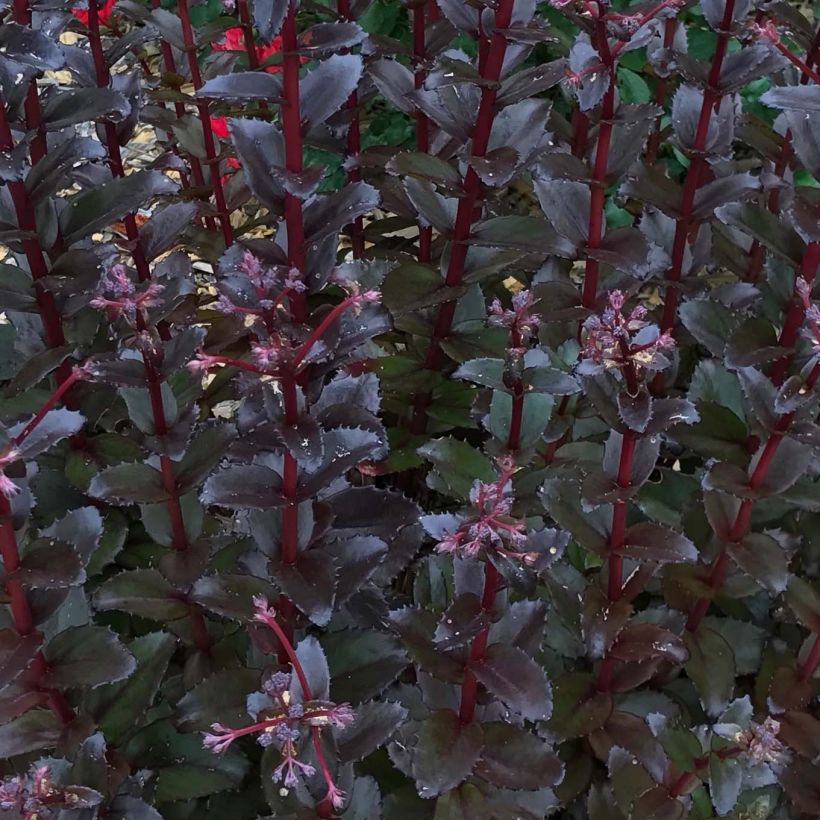



Flowering
Foliage
Plant habit
Botanical data
Sedum
Black Knight (‘Dolseb’)
Crassulaceae
Stonecrop
Cultivar or hybrid
Other Sedum
Planting and care
Plant Sedum 'Black Knight' in light, rather poor and stony soil. It will tolerate very dry soil. It must be well-drained to protect the roots from the cold moisture of winter. It can tolerate clay soils in regions with dry winters. Excessive fertilisation can distort this variety. Plant it in full sun to enhance the foliage colour. Once established, this plant is quite hardy. In pots, provide a layer of gravel for drainage. Divide the plant after 3 to 4 years to encourage vigorous growth and prevent it from thinning out in the centre and the lateral stems from collapsing onto the ground. Sedums are very easy to propagate. In spring, cut a stem or even a leaf and let it dry for a few days in the shade. Then, place it in a tray of moist sand.
Planting period
Intended location
Care
-
, onOrder confirmed
Reply from on Promesse de fleurs
Summer flowering perennials
Haven't found what you were looking for?
Hardiness is the lowest winter temperature a plant can endure without suffering serious damage or even dying. However, hardiness is affected by location (a sheltered area, such as a patio), protection (winter cover) and soil type (hardiness is improved by well-drained soil).

Photo Sharing Terms & Conditions
In order to encourage gardeners to interact and share their experiences, Promesse de fleurs offers various media enabling content to be uploaded onto its Site - in particular via the ‘Photo sharing’ module.
The User agrees to refrain from:
- Posting any content that is illegal, prejudicial, insulting, racist, inciteful to hatred, revisionist, contrary to public decency, that infringes on privacy or on the privacy rights of third parties, in particular the publicity rights of persons and goods, intellectual property rights, or the right to privacy.
- Submitting content on behalf of a third party;
- Impersonate the identity of a third party and/or publish any personal information about a third party;
In general, the User undertakes to refrain from any unethical behaviour.
All Content (in particular text, comments, files, images, photos, videos, creative works, etc.), which may be subject to property or intellectual property rights, image or other private rights, shall remain the property of the User, subject to the limited rights granted by the terms of the licence granted by Promesse de fleurs as stated below. Users are at liberty to publish or not to publish such Content on the Site, notably via the ‘Photo Sharing’ facility, and accept that this Content shall be made public and freely accessible, notably on the Internet.
Users further acknowledge, undertake to have ,and guarantee that they hold all necessary rights and permissions to publish such material on the Site, in particular with regard to the legislation in force pertaining to any privacy, property, intellectual property, image, or contractual rights, or rights of any other nature. By publishing such Content on the Site, Users acknowledge accepting full liability as publishers of the Content within the meaning of the law, and grant Promesse de fleurs, free of charge, an inclusive, worldwide licence for the said Content for the entire duration of its publication, including all reproduction, representation, up/downloading, displaying, performing, transmission, and storage rights.
Users also grant permission for their name to be linked to the Content and accept that this link may not always be made available.
By engaging in posting material, Users consent to their Content becoming automatically accessible on the Internet, in particular on other sites and/or blogs and/or web pages of the Promesse de fleurs site, including in particular social pages and the Promesse de fleurs catalogue.
Users may secure the removal of entrusted content free of charge by issuing a simple request via our contact form.
The flowering period indicated on our website applies to countries and regions located in USDA zone 8 (France, the United Kingdom, Ireland, the Netherlands, etc.)
It will vary according to where you live:
- In zones 9 to 10 (Italy, Spain, Greece, etc.), flowering will occur about 2 to 4 weeks earlier.
- In zones 6 to 7 (Germany, Poland, Slovenia, and lower mountainous regions), flowering will be delayed by 2 to 3 weeks.
- In zone 5 (Central Europe, Scandinavia), blooming will be delayed by 3 to 5 weeks.
In temperate climates, pruning of spring-flowering shrubs (forsythia, spireas, etc.) should be done just after flowering.
Pruning of summer-flowering shrubs (Indian Lilac, Perovskia, etc.) can be done in winter or spring.
In cold regions as well as with frost-sensitive plants, avoid pruning too early when severe frosts may still occur.
The planting period indicated on our website applies to countries and regions located in USDA zone 8 (France, United Kingdom, Ireland, Netherlands).
It will vary according to where you live:
- In Mediterranean zones (Marseille, Madrid, Milan, etc.), autumn and winter are the best planting periods.
- In continental zones (Strasbourg, Munich, Vienna, etc.), delay planting by 2 to 3 weeks in spring and bring it forward by 2 to 4 weeks in autumn.
- In mountainous regions (the Alps, Pyrenees, Carpathians, etc.), it is best to plant in late spring (May-June) or late summer (August-September).
The harvesting period indicated on our website applies to countries and regions in USDA zone 8 (France, England, Ireland, the Netherlands).
In colder areas (Scandinavia, Poland, Austria...) fruit and vegetable harvests are likely to be delayed by 3-4 weeks.
In warmer areas (Italy, Spain, Greece, etc.), harvesting will probably take place earlier, depending on weather conditions.
The sowing periods indicated on our website apply to countries and regions within USDA Zone 8 (France, UK, Ireland, Netherlands).
In colder areas (Scandinavia, Poland, Austria...), delay any outdoor sowing by 3-4 weeks, or sow under glass.
In warmer climes (Italy, Spain, Greece, etc.), bring outdoor sowing forward by a few weeks.

































